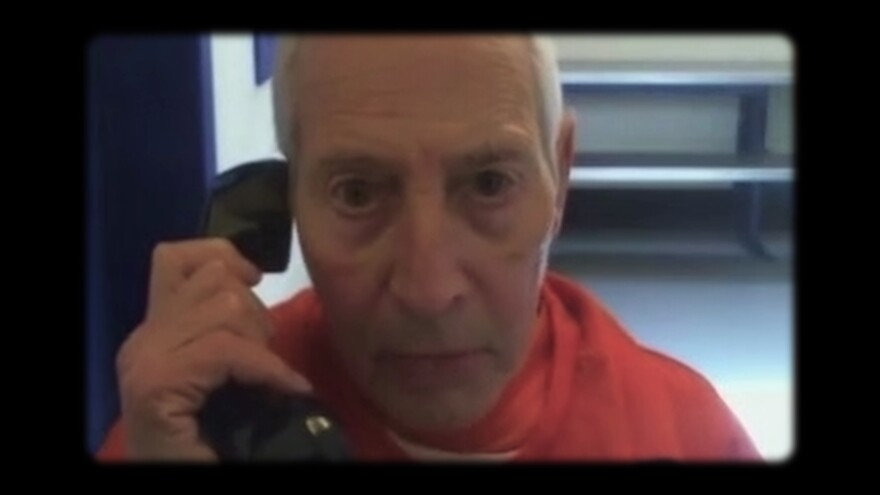In 2014, the producers of This American Life presented a podcast called "Serial," examining the facts, and loose ends, involving a cold murder case. A year later, HBO followed with a TV equivalent:The Jinx: The Life and Deaths of Robert Durst. Together, those two wildly popular programs helped ignite the true-crime documentary and podcast craze – a genre that itself became so imitated that it was spoofed by Hulu's Only Murders in the Building.
The Jinx recounted the story of Robert Durst– a wealthy man suspected, over many decades, of the murders of several people. The documentary series was made with Durst's cooperation – specifically, several on-camera interviews with filmmaker Andrew Jarecki. The final episode climaxed with some stunning remarks made by Durst while he was alone and talking to himself, still wearing a hot mic.
Durst was arrested the night before HBO televised the final episode of The Jinx, and later was convicted of murder, and died in prison in 2022. On April 21, Jarecki returns to HBO with a sequel documentary series, The Jinx – Part Two, which also will stream on Max. I highly recommend you see the original Jinx, first if you haven't – it's available on most streaming sites. But it's not required.
The Jinx – Part Two is amazing right from the start, because filmmaker Jarecki never stopped filming. In the original series, it was the accidental recording of Durst, muttering to himself in a bathroom after Jarecki confronted him with a damning piece of physical evidence, that helped lead to the wealthy man's arrest. The Jinx – Part Two swoops right back in, using phone wiretaps recorded by prosecutors, interviews with investigators and even conversations with witnesses on both sides at the trial – some cooperative, some hostile.
The Jinx – Part Two starts its behind-the-scenes narrative just as the original Jinx is days away from premiering on HBO. Events are captured in real time, revealing themselves like elements in a thriller.
Halfway through the run of the original Jinx, Durst, watching from home, is feeling kind of cocky. But then, because of a spelling error in his handwriting that seems to connect him to an anonymous note sent to police after one murder, he shifts gears. FBI agents and Los Angeles district attorneys track him withdrawing large sums of money, then fleeing before the final episode – but as The Jinx – Part Two shows, he's cleverly tracked down in a New Orleans hotel, and captured.
LA deputy district attorney John Lewin is the first to interrogate to Durst in a recording that we see in The Jinx – Part Two. What follows is a story with as many twists, turns and shockers as the original. Jarecki is as good an interviewer as he is a director, and what he gets out of his conversations with people – from Durst's friends and lovers to his investigators and prosecutors – is unexpected, and sometimes is almost laughably candid.
As it turns out, there's a great story in the continued telling of the Robert Durst saga – and there are some lessons to be learned, too. Don't commit murder. If you DO commit murder, don't cooperate with a documentary filmmaker. And if you DO kill someone, and talk about it on camera, learn how to spell.
Copyright 2024 Fresh Air. To see more, visit Fresh Air.


